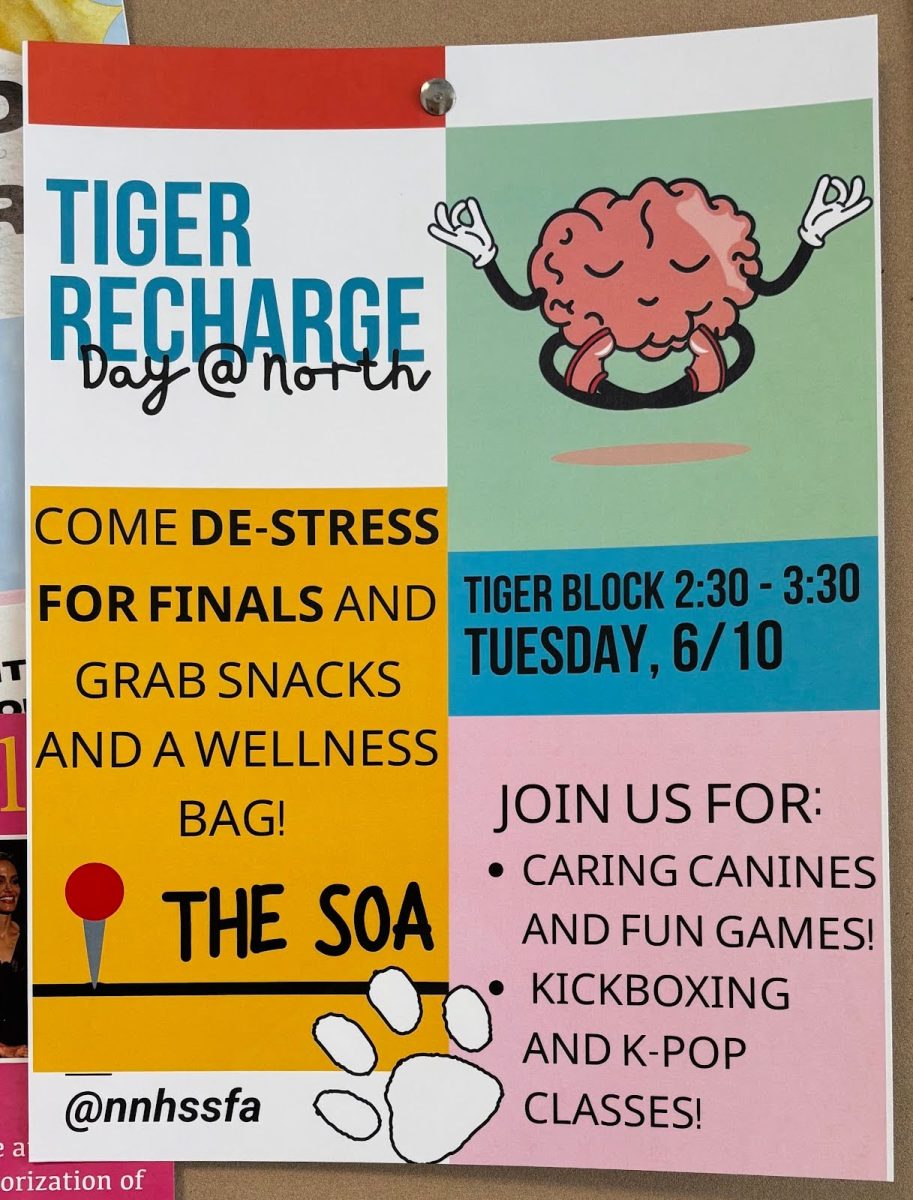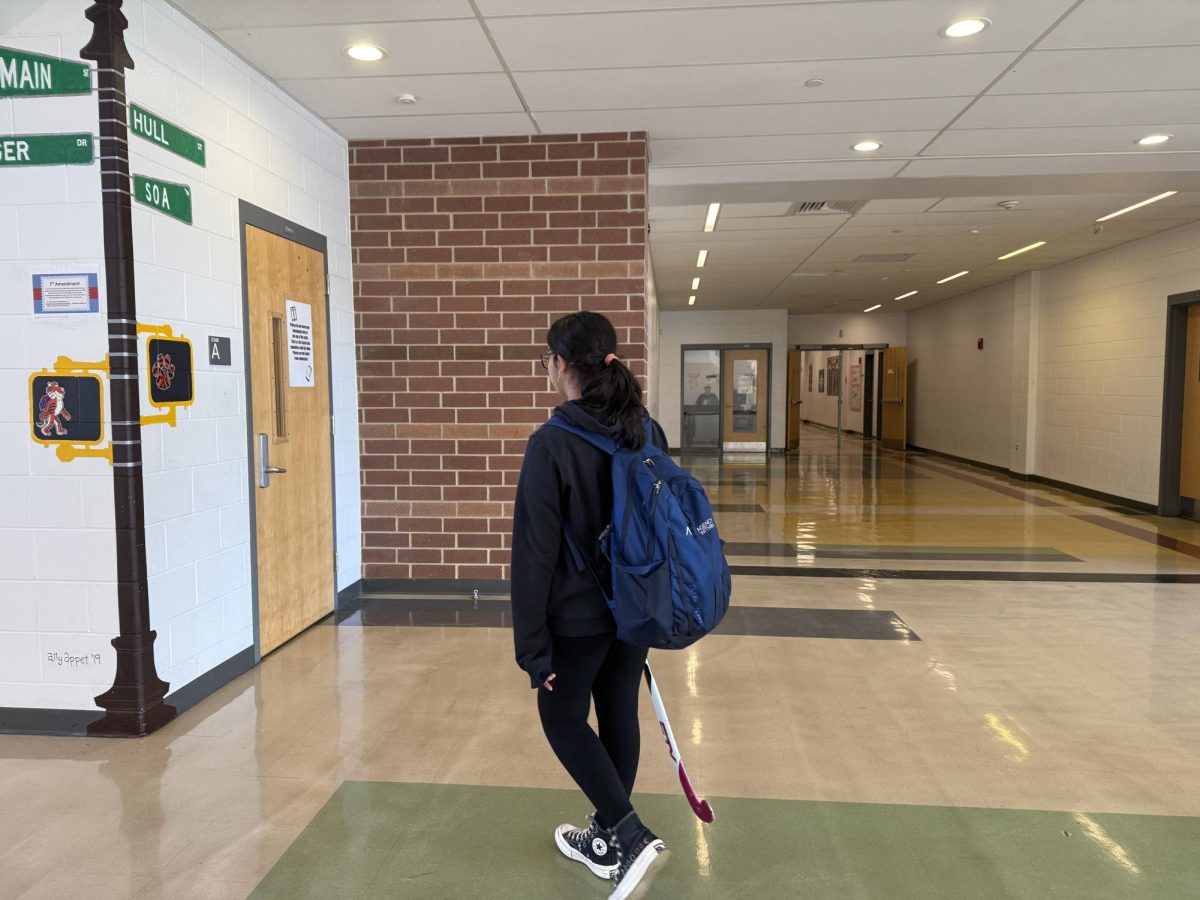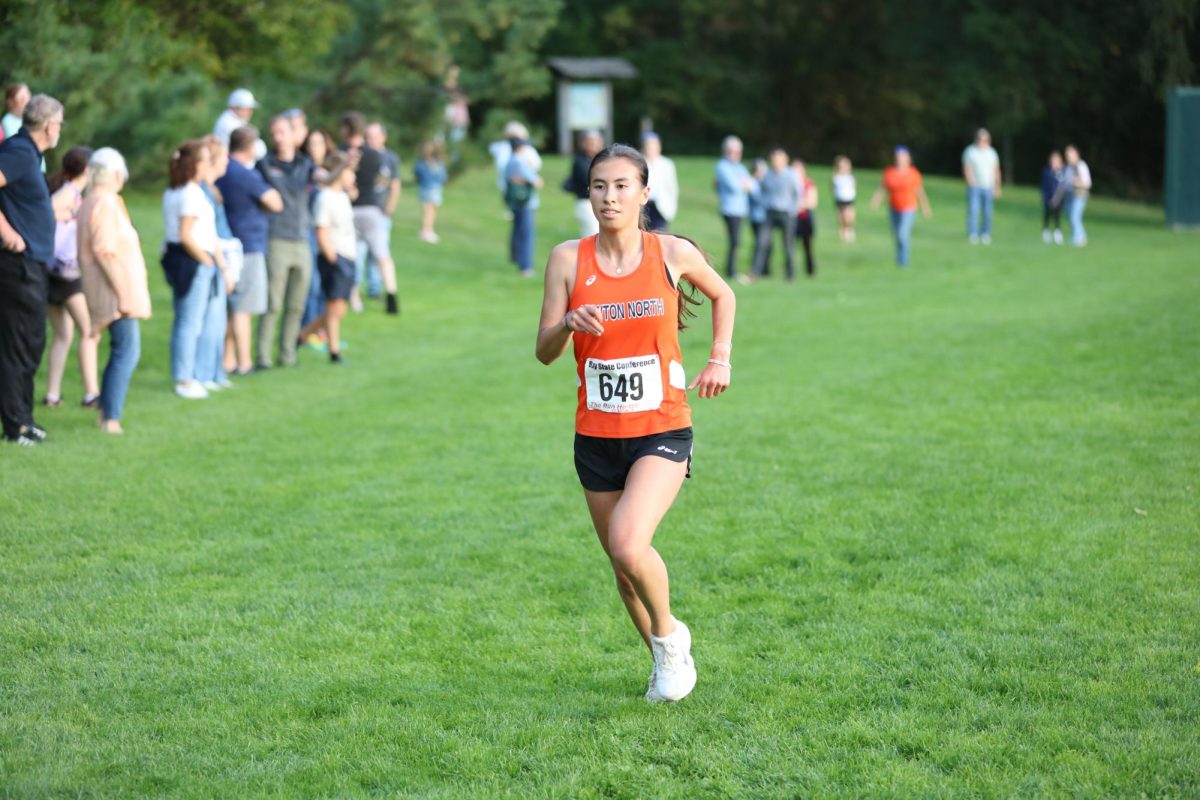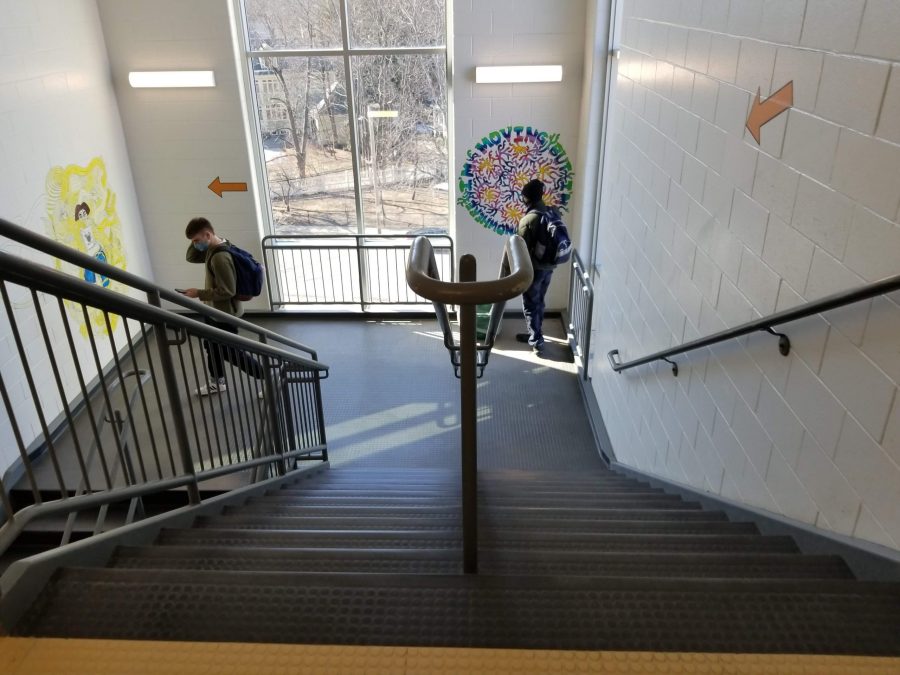It has been well over a year since students have experienced full classrooms or the post-class hallway rush. North’s return to fully in-person learning on April 26 restored a sense of normalcy, and brought benefits to students’ learning and social well-being.
After following extremely strict COVID-19 guidelines and obeying unusual hallway conduct in school for many months, full normalcy is near, yet it still feels like a distant concept for many. Restrictions have been implemented and lifted, and students have been left wondering when school will run the way it used to. However, North’s gradual transitions to fully in-person learning have been steps in that direction, and more progress is to come.
The Massachusetts Department of Elementary and Secondary Education (DESE) mandated on March 5 that by the end of April high schools must return to full-time, in-person learning in order for the following school days to count toward the 170 days of instruction mandated by DESE.
North students began going in-person for part of the day on Wednesdays on May 19 to comply with the latest mandates from DESE.
DESE should not have made this large decision for all of Massachusetts with little notice, but I believe that North has figured out ways to make the best of the mandate for everyone.
Superintendent David Fleishman’s April 16 COVID-19 surveillance testing mandate will also increase school safety.
“Unfortunately, our participation rates are not meeting expectations nor are they at the level at which the pool testing is significantly useful in terms of gauging infection rates,” Fleishman said in an email. “In addition, COVID cases are rising among young people and there have been outbreaks in other towns and cities linked to athletics.”
It was unsettling to know that only about 200 of my peers in cohort A were participating in the surveillance testing when it was easy, harmless, quick, free, and kept everyone safe. I am glad to see this firm action from the Superintendent and I have felt more comfortable in the building. Surveillance testing keeps everyone safe and students and teachers should continue to test regardless of if they participate in extracurricular activities.
Another student worry regarding the switch to fully in-person learning were the effects it would have on remote learners, but according to some, it has stayed relatively equitable.
“As a fully online student, I’m a little worried on the equity issue,” said freshman Zoe Finamore, “but I’ve been satisfied with the way my teachers are balancing kids online and in person so far, so I hope it continues like that.”
Having been fully remote myself before COVID-19 surveillance testing started, I was worried about how the shifting proportions of in-person students to remote students would affect those who are fully distant right now. Luckily, it has stayed balanced and I hope it continues to be so.
While much remained the same when the new learning model began, such as remote students “Zooming in”, one-way hallways, and 10-minute passing times, the increase in number of students, and the three feet of space between them allowed by the Ad Hoc Medical Advisory Committee on March 21 after reviewing evidence from the Center for Disease Control has been a major change.
According to the meeting review document, “This update is based on clear and overwhelming scientific evidence that six feet distance does not offer additional protection as long as masks are being worn.”
I trust the science and the people making the decisions, and I believe that it will be beneficial to be closer to others and for all the students to be in the same room. Sophomore Anna Kaplan said, “I think that three feet spacing is a good idea because it will allow for more group projects in person and will make interactions easier.”
The in-person plan still, for the most part, has allowed virtual students to feel somewhat prioritized. For in-person students, learning in the building five days a week allows them to feel more engaged while also remaining safe and healthy.
DESE took a big risk with this fully in-person mandate, but Newton Public Schools managed it well and students closed the year as one community rather than separated into cohorts and virtual students.










































